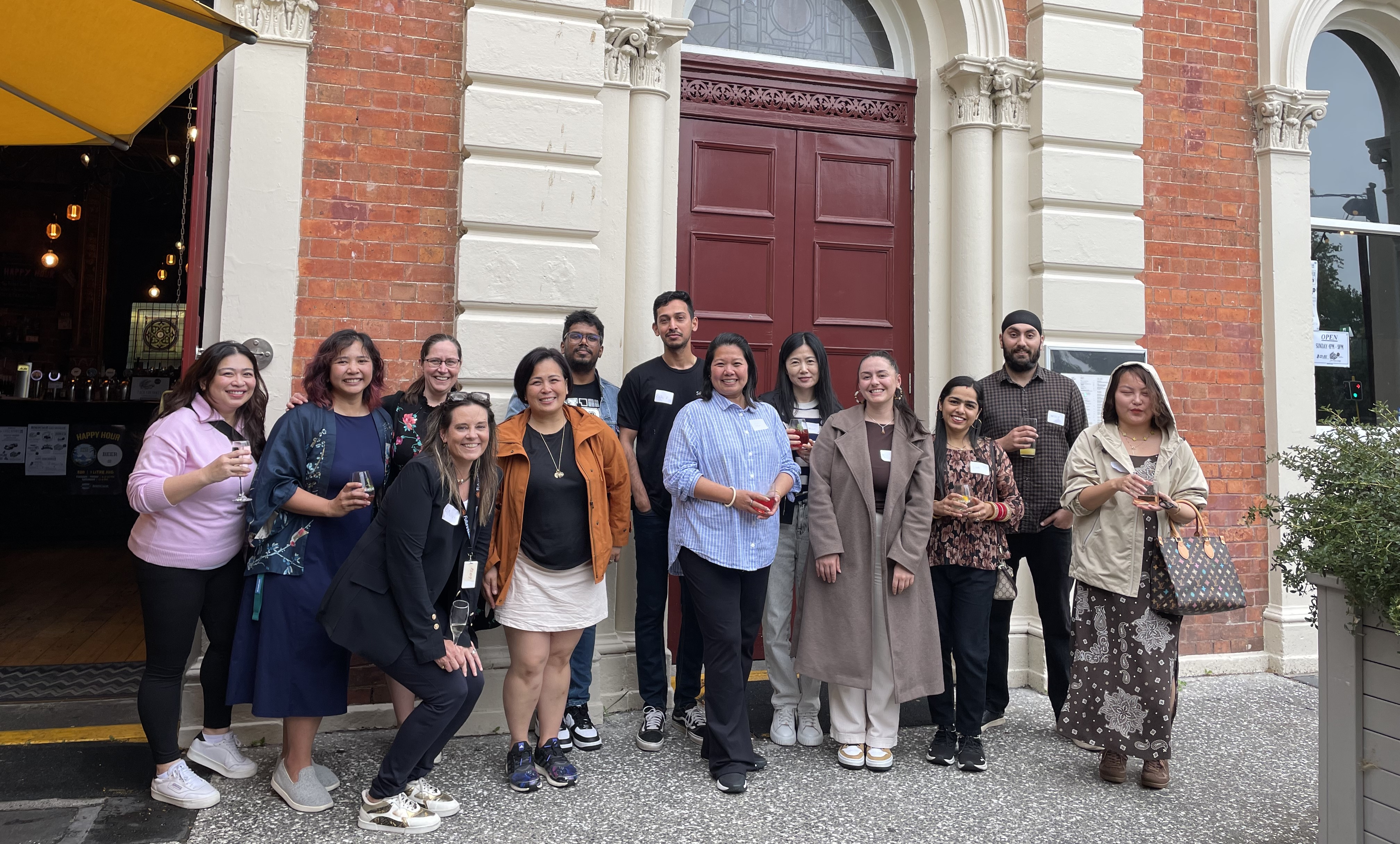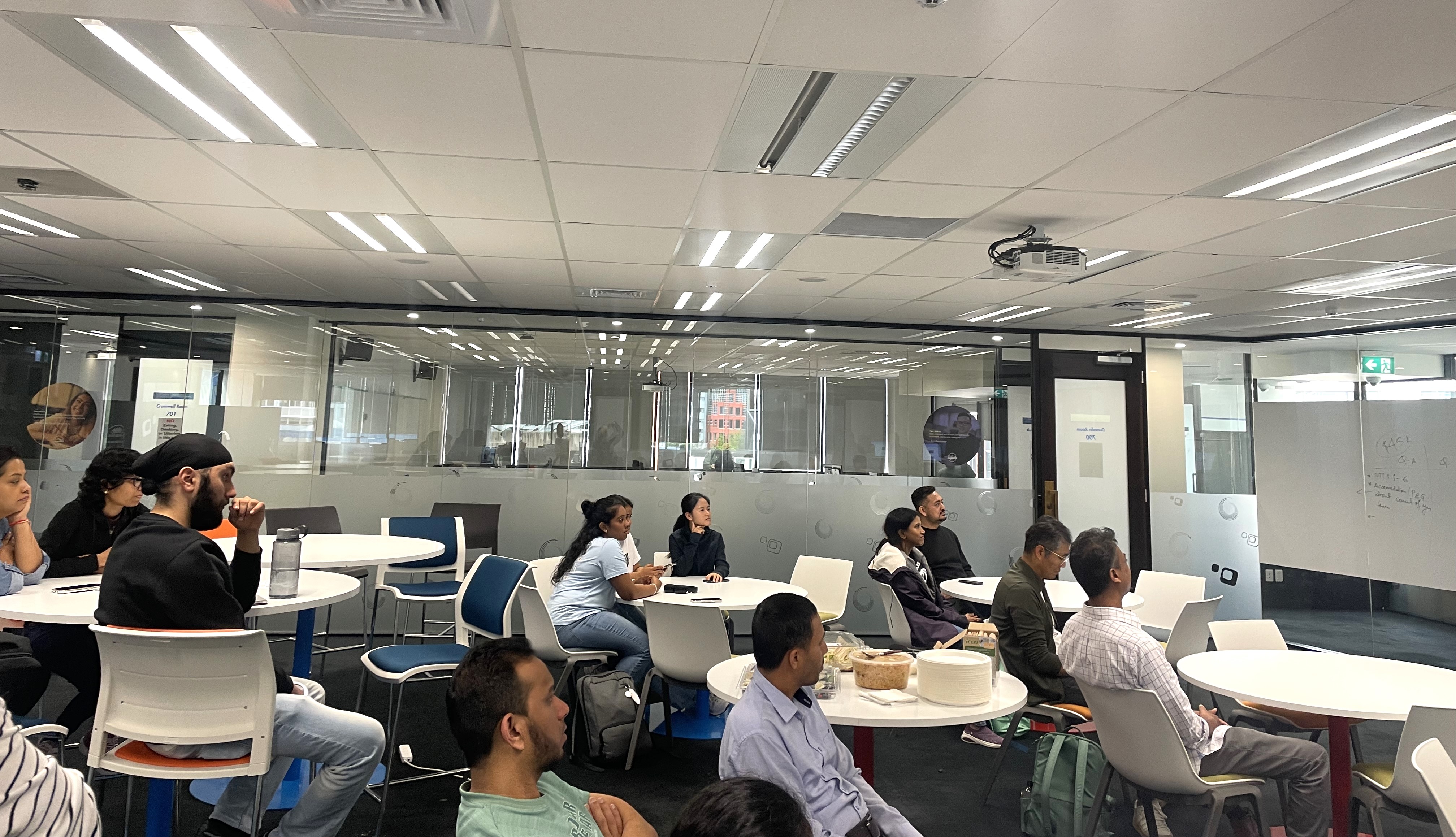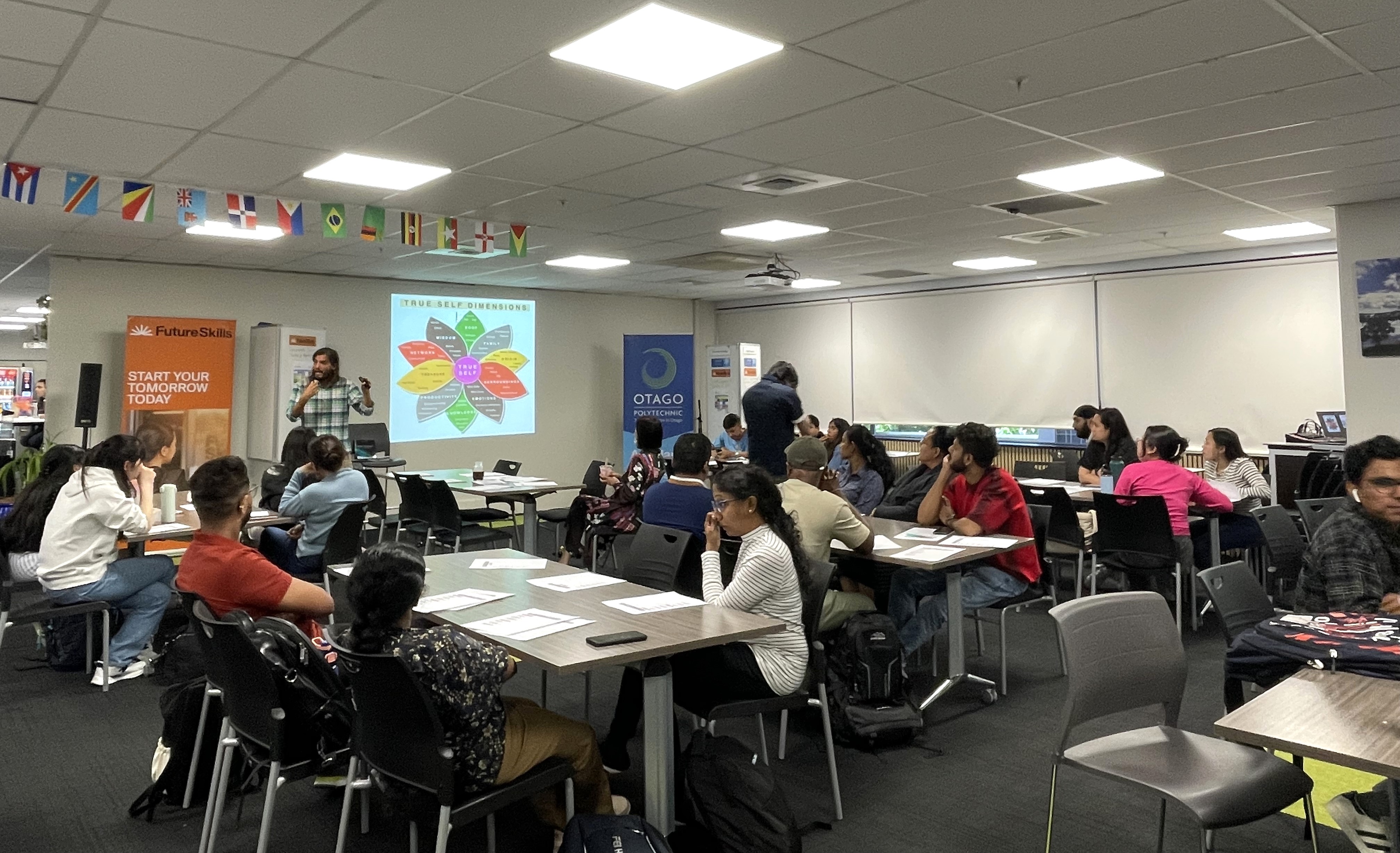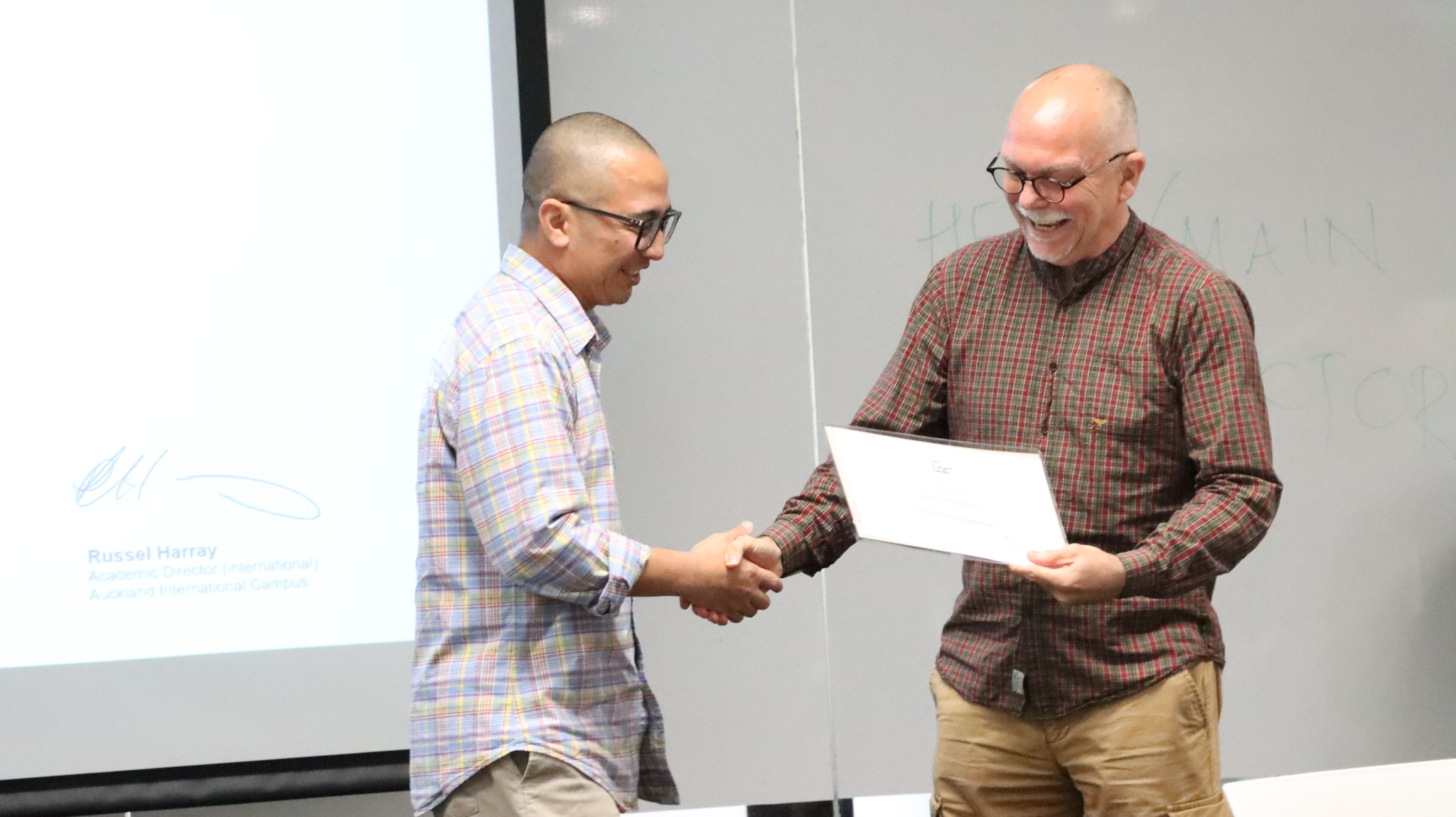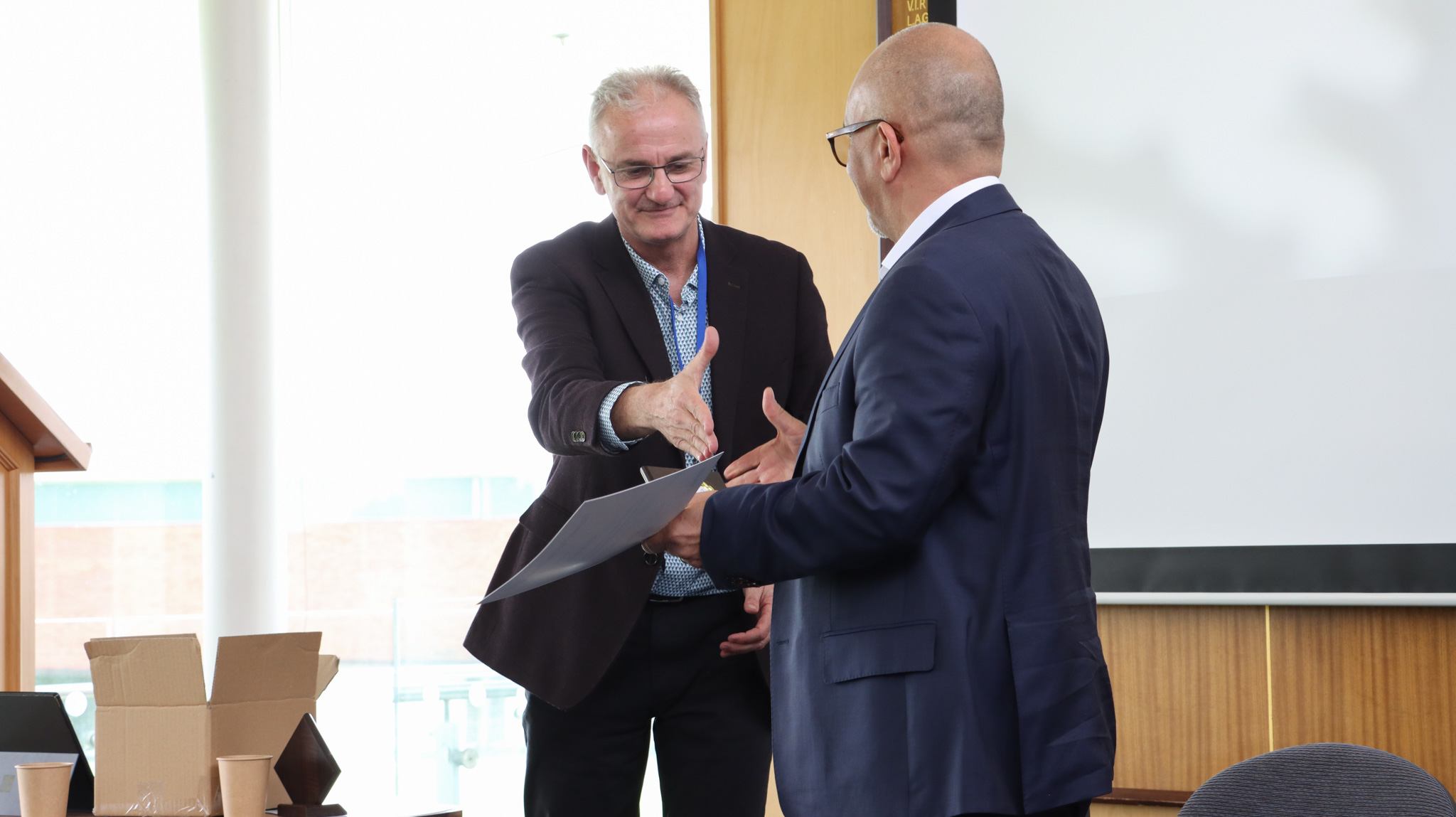HoD reflects on decades in the Building industry
Future Skills Building Surveying Head of Department Patrick Schofield has been recognised for his long service in the industry.

Patrick received recognition for being a member of the Building Officials Institute of New Zealand (BOINZ) for more than 20 years, at their conference and awards dinner last week.
Patrick has been a BOINZ member for 21 years, but his career in the industry spans almost half a century.
He started out as a Carpenter in the NZ Army. He has since worked at Building Consent Authorities throughout the country, including in Christchurch during the earthquake recovery.
Patrick has witnessed a lot of change during his time.
“The building industry has undergone significant transformations over the past two decades, influenced by technological advancements, regulatory changes, and shifts in labour dynamics,” he says.
Patrick says the best thing about working in the industry is the people.
“The people you work with are practical and good people.”
He adds that there’s always been work in the field, even during economic downturns.
His top piece of advice for somebody thinking of entering the industry is to find a good mentor and trainer to talk to, and to define and think about the direction they want to go in their career.
Patrick says he was drawn to teach Building Surveying after the economic and fiscal policies of Rogernomics in 1987.
This era saw the dismantling of many government departments that had traditionally provided extensive training for technicians and tradespeople.
This left a large gap and an extreme shortage of qualified, experienced BCA building officers, he says.
“As a result, there was a 20-year gap where the training of new tradespeople was severely limited. This gap has had long-lasting effects on the availability of skilled labour in New Zealand,” says Patrick.
To address these issues, Patrick believes New Zealand needs to invest heavily in vocational training and education.
Additionally, partnerships between the government, educational institutions, and the private sector could help create more robust training pathways and close the skills gap, he says.
“While the building industry has seen many advancements, the legacy of Rogernomics continues to pose challenges, particularly in the realm of skilled labour training,” says Patrick.
“Efforts to revitalise apprenticeship programmes and invest in vocational education are essential steps towards rebuilding the skilled workforce necessary for the industry's future growth.”



